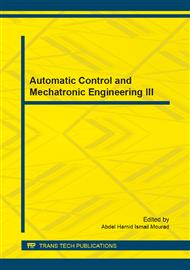p.215
p.222
p.229
p.236
p.240
p.244
p.248
p.255
p.259
Majorized Algorithm and Best Efficiency Unbiased Estimation of Life Functions Parameter in Reliable Analysis of Existence and Life
Abstract:
This article, on the basis of several kinds of essential random truncated distribution functions in reliable analysis of existence and life, discusses the best efficiency unbiased estimation of the life distribution function parameter. It suppliijes reliable basis and efficient algorithm for solving the relative problem on reliable analysis of existence and on the best unbiased estimation in prediction of communication engineering and electrical load. The article is of extensive value in theory and in practice.
Info:
Periodical:
Pages:
240-243
Citation:
Online since:
August 2014
Authors:
Price:
Сopyright:
© 2014 Trans Tech Publications Ltd. All Rights Reserved
Share:
Citation:


